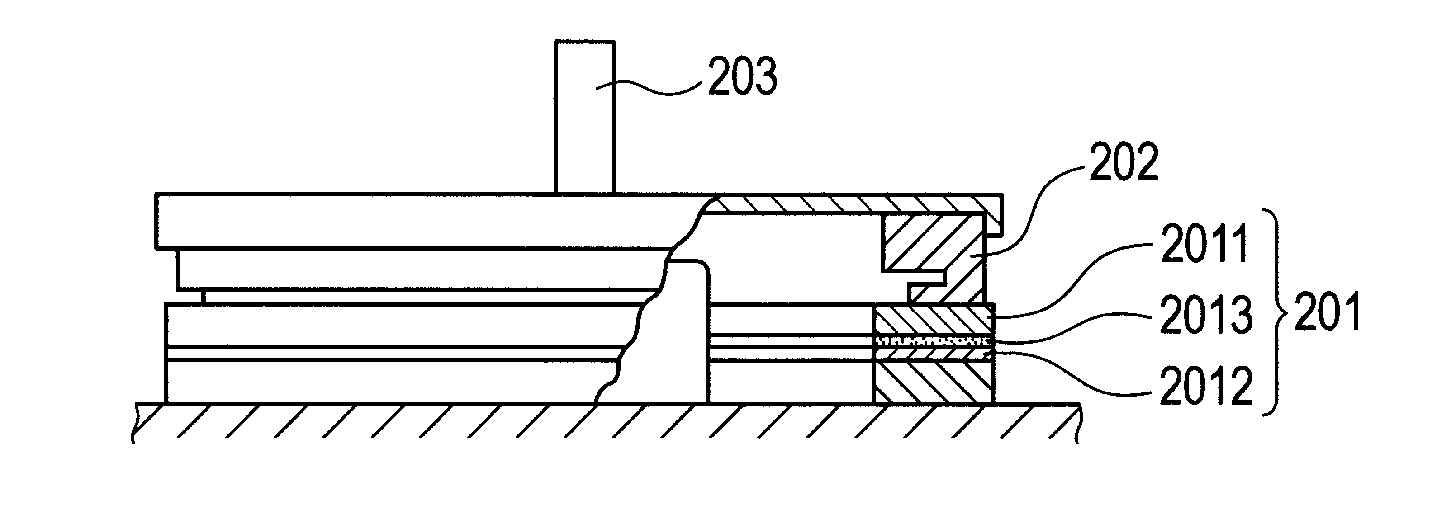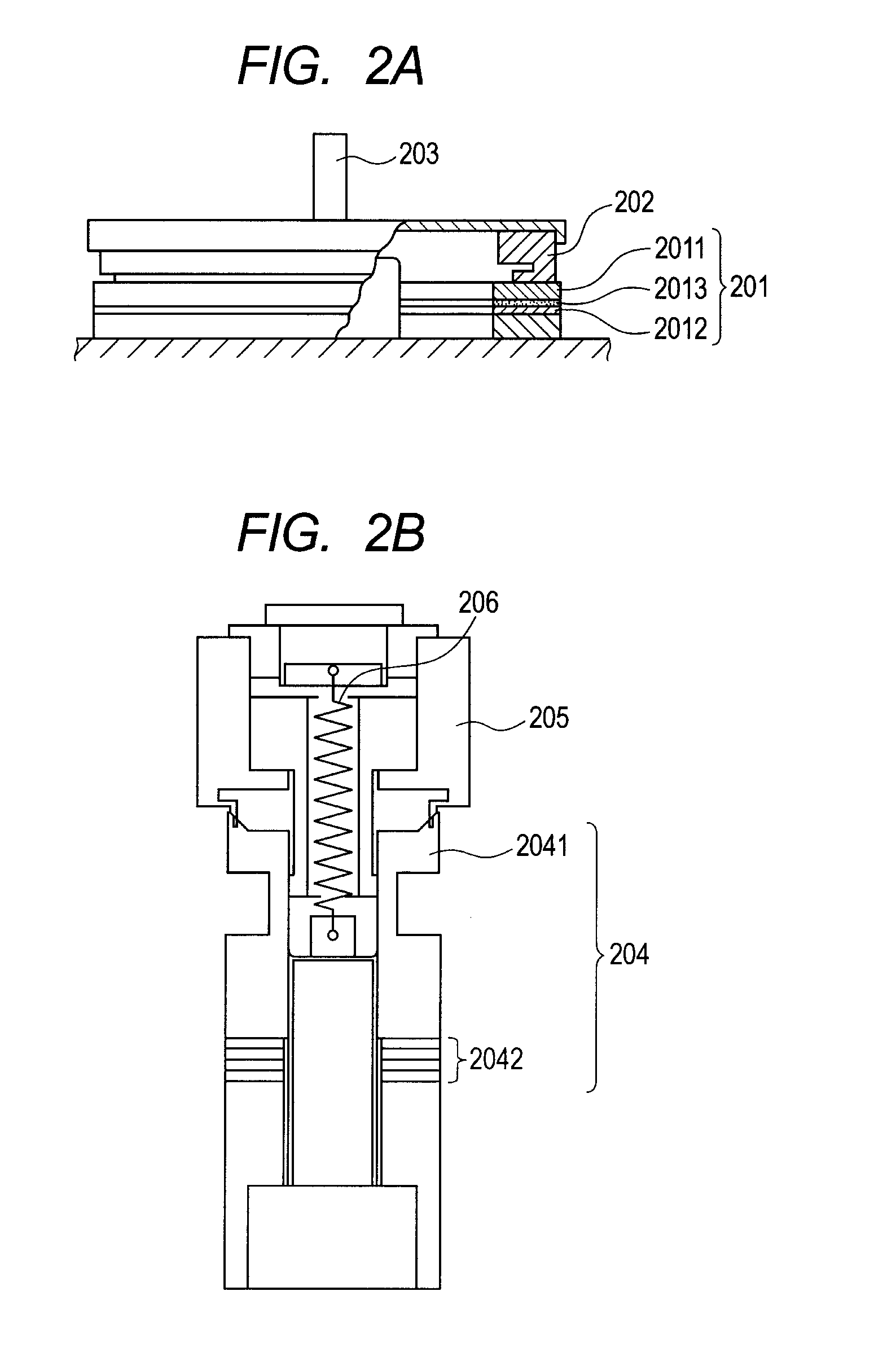Manufacturing method for preferentially-oriented oxide ceramics, preferentially-oriented oxide ceramics, piezoelectric element, liquid discharge head, ultrasonic motor, and dust removing device
a manufacturing method and technology of oxide ceramics, applied in solid-state devices, printing, inorganic chemistry, etc., can solve the problems of difficult to produce barium titanate ceramics having (111) orientation and (111) orientation, and achieve the effect of high crystal orientation
- Summary
- Abstract
- Description
- Claims
- Application Information
AI Technical Summary
Benefits of technology
Problems solved by technology
Method used
Image
Examples
example 1
[0124]Powder having a composition expressed by Ba:Ti:Mn=1.00:0.9:0.05 as a molar ratio was produced. The producing method is the same as Comparative Example 3. The obtained calcined powder had brown color. According to the X-ray diffraction measurement, the sample was constituted only of a hexagonal phase ((b) of FIG. 8). This result is different from Comparative Examples 3 and 4, for which a tetragonal phase was detected.
[0125]Further, the slip casting was performed in the same manner as for Comparative Example 3 in order to produce a compact.
[0126]The obtained compact was the hexagonal barium titanate with (001) orientation. Nb2O5 crystaladded into the slurry was so little that the Nb2O5 crystal was not detected by the X-ray diffraction.
[0127]FIG. 9 illustrates a sample tilting angle dependence of the 204 diffraction intensity of the hexagonal barium titanate. When the sample tilting angle is 0 degrees, the vertical direction of the sample is substantially parallel to the applied ...
examples 2 , 3
Examples 2, 3, and 4
[0129]In Example 1, the Nb oxide powder having the same number of moles as Mn was added to the slurry. In contrast, W, V, or Ta was added instead of Nb as experiments, and thus samples F, G, and H were obtained. The samples F, G, and H were tetragonal crystals with (111) orientation, and the Lotgering factors that indicates the degree of (111) orientation were 83%, 61%, and 53%, respectively.
example 5
[0132]The reduction treatment was performed on the tetragonal barium titanate powder (having a grain diameter of approximately 100 nm) produced by a hydrothermal synthesis method, and thus powder of the oxide crystal B was obtained. The reduction treatment was performed at the atmospheric pressure for 30 to 120 minutes in the atmosphere where the volume concentration of hydrogen is 99% or larger, and the temperature was 1,400 to 1,500 degrees centigrade. The powder after the reduction treatment was characterized by the X-ray diffraction. As a result, the structural phase was the hexagonal barium titanate. According to this reduction treatment, the weight of the barium titanate powder was reduced by 0.2 percent by weight. In addition, the color of the powder was changed from white to blue. When the reducing temperature was lowered to 1,250 degrees centigrade, the hexagonal barium titanate was also detected, but the tetragonal barium titanate was the primary phase. The primary phase m...
PUM
| Property | Measurement | Unit |
|---|---|---|
| Angle | aaaaa | aaaaa |
| Fraction | aaaaa | aaaaa |
| Fraction | aaaaa | aaaaa |
Abstract
Description
Claims
Application Information
 Login to View More
Login to View More - R&D
- Intellectual Property
- Life Sciences
- Materials
- Tech Scout
- Unparalleled Data Quality
- Higher Quality Content
- 60% Fewer Hallucinations
Browse by: Latest US Patents, China's latest patents, Technical Efficacy Thesaurus, Application Domain, Technology Topic, Popular Technical Reports.
© 2025 PatSnap. All rights reserved.Legal|Privacy policy|Modern Slavery Act Transparency Statement|Sitemap|About US| Contact US: help@patsnap.com



